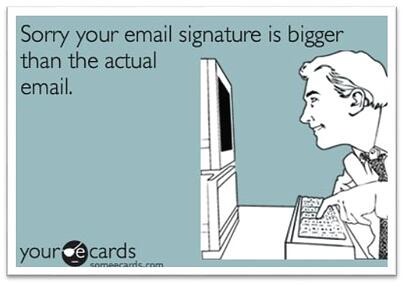 Do you use proper email etiquette? Knowing and using proper etiquette is imperative since it is, more than likely, your most used platform for communicating with your customers. How you "show up" via email is a direct reflection of how you do business and greatly impacts your customers' ongoing perception and trust in you. Let's make sure that your largest area of exposure to your customers (emailing) is something that you and the rest of your company do better than the rest.
Do you use proper email etiquette? Knowing and using proper etiquette is imperative since it is, more than likely, your most used platform for communicating with your customers. How you "show up" via email is a direct reflection of how you do business and greatly impacts your customers' ongoing perception and trust in you. Let's make sure that your largest area of exposure to your customers (emailing) is something that you and the rest of your company do better than the rest.
ProSo’s Top 16 Email Etiquette Tips
1. Be concise and to the point. A long email can be very discouraging to read.
2. Answer all questions, and pre-empt further questions. Don’t waste your time and your customer’s time.
3. Use proper spelling, grammar, and punctuation, and reread your email before sending. Show your attention to detail. Remember, spell check is not infallible.
4. Make it personal. Not only should the email be personally addressed, it should also include personal and customized content.
5. Use templates for frequently used responses. This will allow you to work more efficiently and accurately. But remember, never send a template email without customizing it first!
6. Answer swiftly. Customers send an email because they wish to receive a quick response.
7. Do not attach unnecessary files. By sending large attachments or too many attachments, you can annoy customers and cause problems with their email systems.
8. Use proper structure and layout. Use short paragraphs and blank lines between each paragraph. When making points, number or bullet them.
9. Do not overuse the high priority option. If you overuse the high priority option, it will lose its emphasis when you really need it.
10. Do not write in CAPITALS. Doing so makes it seem as if you are shouting.
11. Don't leave out the message thread. Including the thread makes it easier for everyone to follow the conversation.
12. Do not overuse Reply to All. Only use “Reply to All” if you really need your message to be seen by each person who received the original message.
13. Do not request delivery and read receipts. If you want to know whether an email was received, it is better to ask the recipient to let you know if it was received.
14. Do not ask to recall a message. It is more honest just to send an email to say that you have made a mistake.
15. Do not use email to discuss confidential information. Take care to avoid discussing a customer’s personal information by email unless he/she first prompts the exchange.
16. Use a meaningful subject. Try to use a subject that is meaningful to the recipient as well as yourself.
If you don't already have an email policy in place, you should set one up. With fewer people picking up the phone or meeting face-to-face, your company has to improve how it is seen by others by mastering how you email. We can help you to create a customized email policy - contact us with your questions or needs or click below to learn more about us.


